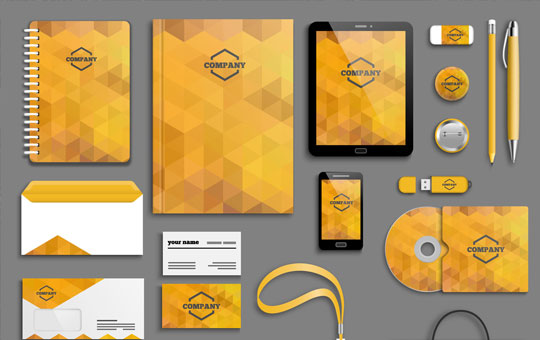
Many applicants assume that receiving an adverse examination report is the end of the line. That doesn’t need to be the case. We have many years of experience developing and implementing strategies to overcome examination issues to ensure you obtain register Trade Mark protection. Those strategies can be quick fixes or could take months or years to implement. If it is a total lost cause, we can find alternative ways to register your Trade Mark to ensure you have some form of enforceable protection for your IP.
We don’t charge for helping you to come up with an effective strategy. We work with you to provide all the options you need so you can confidently engage us to action your chosen strategy with upfront fixed fees. If you would like us to put together a Complimentary Response Strategy for you, please up email your Adverse Report to info@yiplegal.com.au and we will get back to you as soon as possible with a plan of attack.
Once your Trade Mark application has been lodged with IP Australia, the general timeframe for it to undergo examination is around 3-4 months. It can be sooner or later depending on the workload of the Examiner assigned to your Trade Mark. IP Australia’s Examiners are highly qualified government officials who are trained to identify both procedural and substantive issues which may prevent your Trade Mark from being accepted for registration. If your application passes examination, you will be issued a Clear Report informing you that your Trade Mark application will shortly be advertised in the Official Journal of Trade Marks for a period of 2 months, before a registration certificate will be issued. If problems are identified, you will receive an Adverse Report outlining the issues and the time frame to overcome them. At this point, it is recommended that you seek professional advice from a Trade Mark Lawyer or Attorney who may be able to come up with an innovative strategy to get around the issues raised.
Contact Us

Yes. It is possible to request that examination of your application be expedited by providing a short declaration outlining why there is a need for you to find out sooner. Common reasons can include the impending launch of a product or service offering or a current dispute concerning the Trade Mark. In those situations, examination can be sped up to around 2-3 weeks, however, the overall time frame to achieve registration will not be affected. Alternatively, you will also receive an earlier indication of registrability by filing through the HeadStart application system, although the results of that earlier examination (whilst providing a strong indication) are not necessarily conclusive of registrability.
Contact UsThe main substantive grounds for refusal of a Trade Mark are outlined in sections 41-44 of the Trade Marks Act 1995. The application must also comply with the procedural filing requirements which can often be easily fixed.
The most common substantive grounds which are raised are:
This ground is raised where a Trade Mark is considered to be insufficiently distinctive to differentiate your claimed goods or services from other traders. For example, the Trade Mark PINK NAPKINS for napkins would receive this objection because it is merely describing the product and other traders would be likely to use that term in describing similar goods. The objection is also commonly raised if you are applying for a common surname (eg. SMITH, JOHNSON) for ordinary goods or services.
The most common strategies to overcome this objection are to:
Argue Against It By Filing Legal Submissions (Particularly If The Objection Appears To Be Borderline);
Prepare And Submit Evidence Of Use Of Your Trade Mark. That Evidence Needs To Establish That By Reason Of Your Use And Promotion Of Your Mark, That Despite Its Descriptiveness, Consumers Have Come To Associate That Mark With Your Goods And Services.

#Case Study 1
The Examiner had raised an objection to registration on the basis that our client’s Trade Mark contained a term which was descriptive of the services claimed. We were able to locate and produce evidence and supporting arguments to show that whilst the Trade Mark term would be understood as having that descriptive connotation overseas, the term did not have the same descriptive connotation amongst Australian consumers. The Examiner agreed with our submissions and the objection was withdrawn, allowing the Trade Mark to proceed to registration.

#Case Study 2
Our client had been operating a vehicle hire business for many years but using a very descriptive name. We were able to compile and produce compelling evidence to show that due to the extent of our client’s use, the name had become synonymous and exclusively associated with their business. The Examiner agreed with that evidence and allowed the Trade Mark to proceed to registration.
This ground compares your Trade Mark to other pending or registered Trade Marks on the Australian Trade Marks Register to determine if there any other substantially identical or deceptively similar marks conflicting with yours which also claim similar or closely related goods or services.
The most common strategies to overcome this objection are to:
Seek Removal Of The Cited Trade Mark. This Can Be Effective If The Cited Trade Mark No Longer Appears To Be In Use Or Discontinued;
Approach The Trade Mark Owner For Consent: This Can Be Effective If In Practicality The Trade Marks Are Non-Competitive And Are Capable Of Co-Existence. However, Since This Could Potentially Place You On Another Parties Radar For A Potential Infringement Claim And There Is No Obligation On A Third Party To Consent, An Approach Needs To Be Considered With Caution And Approached In The Right Manner.

#Case Study 3
Our client’s application for its tagline Trade Mark was being blocked by a very similar registered mark. We were able to identify that the owner of the earlier mark had been deregistered and that their mark had fallen into disuse, so applied to have that Trade Mark removed from the Register. The application was not contested and the mark was removed, allowing our client’s Trade Mark to proceed to acceptance and registration..

#Case Study 4:
Our client’s application for its business name and logo was being blocked by a phonetically similar (but differently spelt) Trade Mark. We were able to identify that the earlier Trade Mark was at risk of removal and used that knowledge as a basis for successfully negotiating the provision of consent from the other Trade Mark owner for our client’s Trade Mark to be registered..

15 months from the issue of the Trade Mark examination report. If your Trade Mark is not accepted after this time, your application will lapse. There are however a number of ways to extend this time frame if necessary by filing applications for extension of time, or alternatively, by filing divisional applications based on the initial parent application. The benefit of extending rather than refiling the application from scratch is that you will not lose your initial priority filing date, meaning that subsequently filed Trade Marks will still go in the queue after yours if you keep the application alive.
To discuss your needs with a qualified intellectual property lawyer, book a meeting today. Our experienced IP lawyer in Melbourne can quickly get to the heart of your issue. We can provide you with the information, guidance and options you need to make an informed decision before you choose to engage us. You can contact us by booking in a callback (through our Service Portal), sending an email, or by calling 03 8371 0012.
To discuss your needs with a qualified intellectual property lawyer, book a meeting today. Our experienced IP lawyer in Melbourne can quickly get to the heart of your issue. We can provide you with the information, guidance and options you need to make an informed decision before you choose to engage us.
info@yiplegal.com.au
5 Everage Street, Moonee Ponds
Melbourne, VIC 3039